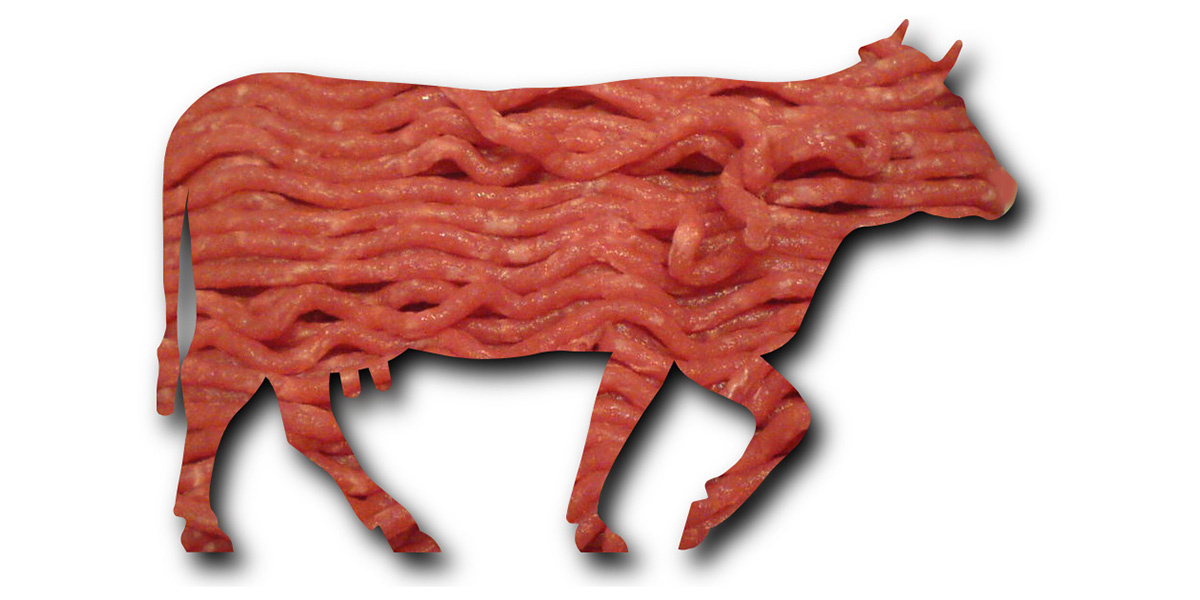
Burger With a Side of Plastic: More Than 35,000 Pounds of Ground Beef Recalled Due to Contamination

One unlucky diner found a nasty surprise in their ground beef―pieces of hard, blue plastic.
That discovery has led to a recall of more than 35,000 pounds of ground beef sold in Kroger stores, The Charlotte Observer reported Wednesday.
The recall was announced Wednesday by the U.S. Department of Agriculture (USDA).
“There have been no confirmed reports of adverse reactions due to the consumption of these products. Anyone concerned about an injury or illness should contact a healthcare provider,” the USDA release said.
According to the USDA, the beef in question was produced by Lenoir, North Carolina-based JBS USA, Inc. on March 22, 2018. It was then shipped to Virginia and Indiana to be distributed to retailers.
The USDA expressed concern that some of the potentially-contaminated beef might be stored in customers’ freezers. They urged anyone who had purchased the beef not to eat it, but instead to throw it away or return it to the store.
Of course, most of the plastic we consume does not lead to a recall, since it is usually too small to detect.
A study published March 29 in Environmental Pollution found that we likely consume around 114 microplastics with every meal, usually from plastic fibers from clothing, furniture or tires that make their way into household dust.
Humans also consume plastic by eating seafood. A 2016 study found plastic in a third of all fish caught in the UK, The Guardian reported last year. According to the same article, which provides an in-depth look at the ocean plastic problem, some of that plastic enters the fish when they consume zooplankton, who eat it first, and some if it is consumed by fish directly. Studies have shown that toxins contained in microplastics leach into the tissues of marine life, and there are concerns that this could impact the health of human seafood eaters.
Usually, there is no sign on the food you eat indicating whether it contains plastic or not, but if you think you might have purchased some of the plastic-contaminated ground beef, here are the labels to look out for, according to the USDA:
- 3-lb. tray packages containing “Kroger GROUND BEEF 73% LEAN – 27% FAT” with product code 95051, UPC: 011110975645, and a Sell By date of 4/9/2018
- 1-lb. tray packages containing “Kroger GROUND BEEF 80% LEAN – 20% FAT” with product code 95052, UPC: 011110969729, and a Sell By date of 4/9/2018
- 3-lb. tray packages containing “Kroger GROUND BEEF 80% LEAN – 20% FAT” with product code 95053, UPC of 011110969705, and a Sell By date of 4/9/2018
- 1-lb. tray packages containing “PRIVATE SELECTION ANGUS BEEF 80% LEAN – 20% FAT GROUND CHUCK” with product code 95054, UPC: 011110971395, and a Sell By date of 4/9/2018
- 1-lb. tray packages containing “Kroger GROUND BEEF 85% LEAN – 15% FAT” with product code 95055, UPC: 011110969682, and a Sell By date of 4/9/2018
- 1-lb. tray packages containing “Kroger GROUND SIRLOIN 90% LEAN – 10% FAT GROUND BEEF” and product code 95056, UPC: 011110975638, and a Sell By date of 4/9/2018
- 1-lb. tray packages containing “ALL NATURAL LAURA’S LEAN BEEF 92% LEAN – 8% FAT GROUND BEEF” with product code 95057, UPC: 612669316714, and a Sell By date of 4/9/2018
- 1-lb. tray packages containing “ALL NATURAL LAURA’S LEAN BEEF 96% LEAN – 4% FAT GROUND BEEF” with product code 95058, UPC: 612669317063, and a Sell By date of 4/9/2018
- 1-lb. tray packages containing “PRIVATE SELECTION ANGUS BEEF 90% LEAN – 10% FAT GROUND SIRLOIN” with product code 95063, UPC: 011110969637 and a Sell By date of 4/9/2018
- 1-lb. tray packages containing “Kroger GROUND BEEF 93% LEAN – 7% FAT” with product code 95064, UPC: 01111096920, and a Sell By date of 4/9/2018
- 15-lb. cases containing “JBS Ground Beef Angus Chuck 80% Lean – 20% Fat Service Case” with Case UPC: 0040404800632 and a “Sell By: 9.APRIL”
- 15-lb. cases containing “Ground Beef Angus Sirloin 90% Lean – 10% Fat Service Case” Case UPC: 0040404800634, and a “Sell By: 9.APRIL”
The establishment number inside the USDA mark of inspection on the recalled packages is “EST. 34176.”
Here's Why Most Most of the Meat Americans Eat Is Banned in Other Industrialized Countries https://t.co/mDMgvDrs28 @food_democracy
— EcoWatch (@EcoWatch) July 9, 2017

 233k
233k  41k
41k  Subscribe
Subscribe 